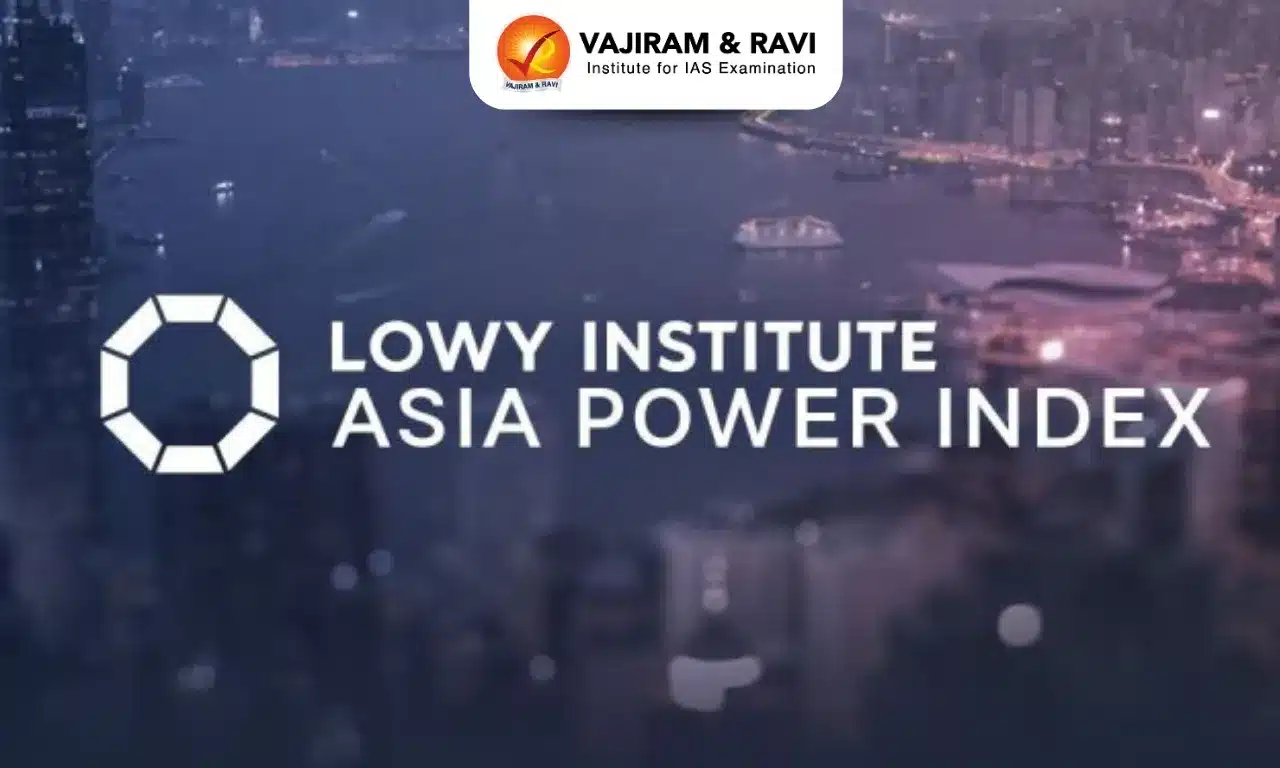Asia Power Index Latest News
Recently, India has secured third ranking in the Asia Power Index 2025, while the U.S. and China occupy the first and second spots.
About Asia Power Index
- It is published annually by the Australia-based think tank, Lowy Institute.
- It assesses the ability of nations, particularly of those in the Asian continent, to influence their external environment.
- It is the seventh edition which evaluates the power of 27 countries and territories across Asia, based on 131 indicators across eight thematic measures, including Military Capability and Defence Networks, Economic Capability and Relationships, Diplomatic and Cultural Influence and Resilience and Future Resources.
Highlights of Asia Power Index 2025
- India ranks third for two measures: economic capability and future resources.
- India’s economic and military capability have both increased in the 2025 edition of the Asia Power Index.
- India’s weakest measure is defence networks, where it sits at 11th.
- India’s economy has continued to grow strongly and made small gains in terms of its geopolitical relevance – defined in terms of international leverage, connectivity, and technology.
Source: News On Air
Last updated on December, 2025
→ Check out the latest UPSC Syllabus 2026 here.
→ Join Vajiram & Ravi’s Interview Guidance Programme for expert help to crack your final UPSC stage.
→ UPSC Mains Result 2025 is now out.
→ UPSC Notification 2026 is scheduled to be released on January 14, 2026.
→ UPSC Calendar 2026 is released on 15th May, 2025.
→ The UPSC Vacancy 2025 were released 1129, out of which 979 were for UPSC CSE and remaining 150 are for UPSC IFoS.
→ UPSC Prelims 2026 will be conducted on 24th May, 2026 & UPSC Mains 2026 will be conducted on 21st August 2026.
→ The UPSC Selection Process is of 3 stages-Prelims, Mains and Interview.
→ UPSC Result 2024 is released with latest UPSC Marksheet 2024. Check Now!
→ UPSC Prelims Result 2025 is out now for the CSE held on 25 May 2025.
→ UPSC Toppers List 2024 is released now. Shakti Dubey is UPSC AIR 1 2024 Topper.
→ UPSC Prelims Question Paper 2025 and Unofficial Prelims Answer Key 2025 are available now.
→ UPSC Mains Question Paper 2025 is out for Essay, GS 1, 2, 3 & GS 4.
→ UPSC Mains Indian Language Question Paper 2025 is now out.
→ UPSC Mains Optional Question Paper 2025 is now out.
→ Also check Best IAS Coaching in Delhi
Asia Power Index FAQs
Q1. What is India's rank in the Asia Power Index 2025?+
Q2. Which think tank releases the Asia Power Index annually?+
Tags: asia power index prelims pointers upsc current affairs

















